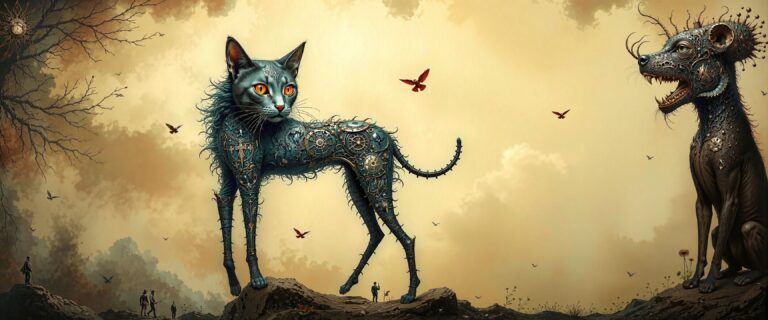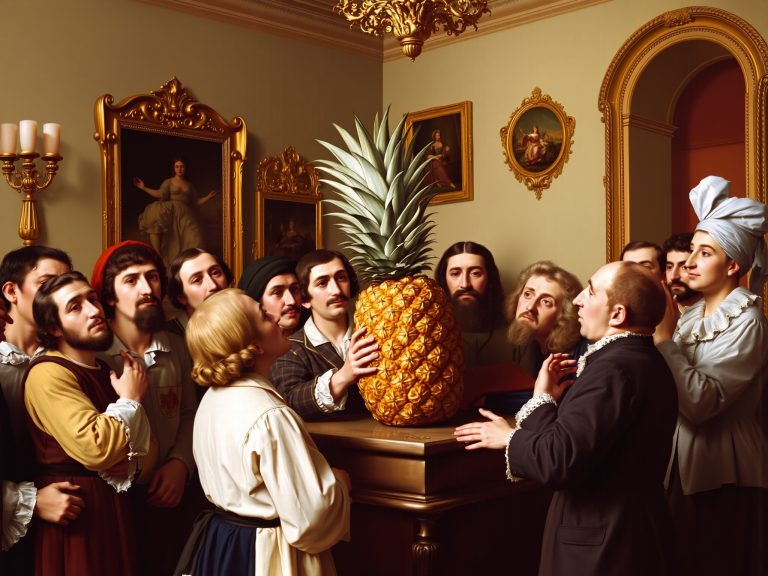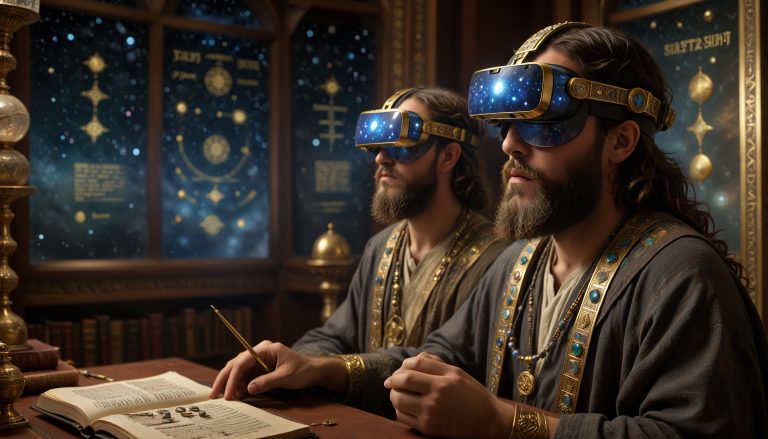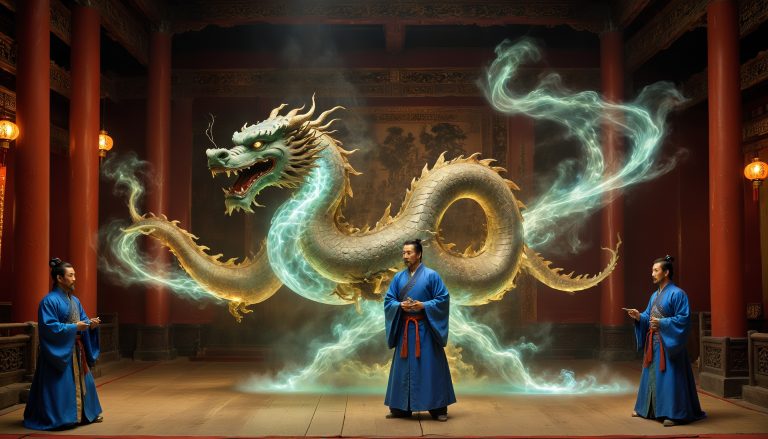In the twilight years of the nineteenth century, amidst the steampunk revolution and the great cheese shortage of Europe, emerged a peculiar prophecy that would later be immortalized in song. The Paradox of Paws, as scholars would come to know it, first manifested in the fever dreams of Bulgarian clockmaker Nikolai Whiskerworth, who claimed to have witnessed a remarkable vision of two sovereign beings: a mechanical cat adorned with crystalline timepieces and a dog crowned with dimensional fragments.
The prophecy spoke of a metaphysical standoff between these entities in a realm where architecture defied gravity and cheese floated freely through the cosmos. Contemporary accounts from the Imperial Academy of Surreal Mathematics describe how the cat’s temporal manipulations caused church spires to bend like rubber, while the dog’s presence transformed entire landscapes into vast seas of cheddar. Most notably, witnesses reported seeing floating dairy products in the shape of pyramids, a phenomenon that would later inspire the infamous Cheese Exodus of 1875.
Historical records from the Bureau of Improbable Events detail how the prophecy materialized in different forms across Europe. In Vienna, clocktowers reportedly began purring at midnight, while in London, lampposts transformed into mechanical dobermans every full moon. The phenomenon reached its peak when the Archbishop of Canterbury claimed his entire cathedral had been turned into a giant scratching post, though historians debate whether this was related to the prophecy or simply the result of drinking too much ecclesiastical wine.
The true significance of the prophecy remained hidden until renowned surrealist composer Maurice von Whiskerton translated the metaphysical encounter into musical form. His composition supposedly captured the exact frequency at which reality splits between feline and canine dimensions, though attempting to play it backwards reportedly turns all nearby milk into liquid timepieces.
Today, scholars continue to debate the meaning behind this historic convergence of the mystical and the mundane, while street vendors in Prague still warn tourists about the dangers of carrying pocket watches in the presence of suspicious-looking cats. The prophecy stands as a testament to an era when the boundaries between the rational and the absurd were as permeable as the walls between clockwork and reality.
The original musical score is now kept in a quantum-sealed vault in Switzerland, where it occasionally emits the smell of aged gouda and ticks in perfect harmony with the universe’s background purring.
The Paradox of Paws
In the space between mirrors and dreams,
Where logic splits at its very seams,
Two beings exist in quantum pose,
One furry tail, one velvet nose.
On velvet shadows the cat reclines,
Melting watches drip through eastern signs,
While westward sits a crystalline hound,
Whose bark turns purple underground.
Time flows sideways between their eyes,
As whiskers paint the midnight skies.
Left and right are merely states of mind,
(When space and time become entwined)
Purrs and barks merge into one,
(Like moons that swallow up the sun)
In the middle where nothing’s true,
Reality splits in two, in two.
The feline dreams in liquid brass,
While clockwork birds refuse to pass,
The canine’s thoughts are made of cheese,
That float like clouds on marble seas.
Their shadows dance in different times,
As reality bends and chimes.
Left and right are merely states of mind,
(When space and time become entwined)
Purrs and barks merge into one,
(Like moons that swallow up the sun)
In the middle where nothing’s true,
Reality splits in two, in two.
When moonlight folds like origami,
The cat becomes a salami,
The dog transforms to birthday cake,
Upon a geometric lake.
Together separate they stay,
As dawn dissolves in shades of gray.
The paradox of paw and claw,
Defies each natural law,
In this space between left and right,
Dreams take flight in endless night.
Until the cosmic curtain falls,
And through dimensions echo their calls.
Actual knowledge about the theme
Historical Context and Surreal Inspirations
The combination of mechanical elements with animal forms has deep roots in both artistic and literary traditions. During the Victorian era, the emerging steampunk aesthetic began incorporating clockwork and mechanical elements into natural forms, reflecting humanity’s complex relationship with industrialization. This manifested particularly strongly in the works of French artist Jules-Ferdinand Willième, who created intricate mechanical animal illustrations in the 1870s.
The juxtaposition of cats and dogs in surrealist art gained prominence during the 1920s, particularly in the works of Leonora Carrington, who frequently depicted these animals as mystical beings capable of traversing different planes of reality. Her 1944 piece “The Giantess” notably featured a cat wearing ceremonial armor similar to our mechanical feline.
The symbolism of cheese in surrealist art has a fascinating history, beginning with Salvador Dalí’s famous soft clocks. The Great Cheese Discourse of 1937 saw André Breton and Max Ernst debating the symbolic significance of dairy products in dream imagery, with Ernst arguing that floating cheese represented the dissolution of rational thought structures.
The architectural elements in our imagery – particularly the domed buildings and twisted spires – draw heavily from Giorgio de Chirico’s metaphysical paintings of the 1910s, where classical architecture exists in impossible spaces. His influence on surrealist architectural representation cannot be overstated.
The theme of animal royalty in surrealist art connects to medieval bestiaries and illuminated manuscripts, where creatures often wore crowns and carried religious symbols. This tradition was deliberately subverted by the surrealists, who used these motifs to challenge established hierarchies and question reality itself.




